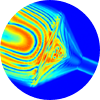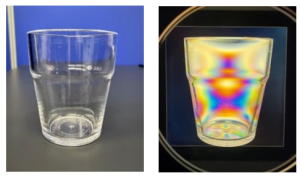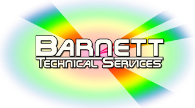Polariscope Glass Inspection

How Polariscope Inspection Ensures Glass Quality
Polariscope inspection is a crucial step in the manufacturing of products made of glass, helping to detect defects early on and ensure the integrity and performance of various products. A polariscope is a specialized instrument that utilizes polarized light to identify stress and strain patterns within glass (or other transparent materials such as injection-molded plastic). The polariscope can reveal inconsistencies in the glass structure that may compromise its quality. Polariscope inspection is vital across various industries, including architectural glass, automotive glass, consumer glassware, and optoelectronics. By revealing hidden flaws, it helps maintain the quality and durability of glass products, ensuring consumer safety and satisfaction.

Image Credit: https://luceo.co.jp/en/wp-content/uploads/2022/04/Polariscope_leaflet_202202_E.pdf
How Does Polariscope Inspection Work?
The process involves emitting polarized light through a glass sample and analyzing the light as it passes through another polarizer to a detector. Stress-free glass allows the rays to pass through the analyzer unobstructed. However, if stress or strain is present, the rays become misaligned and are optically retarded, resulting in specific patterns that can be interpreted by professionals to identify defects.
5 Hidden Defects a Polariscope Inspection Can Reveal in Glass
Glass appears deceptively simple. We see through it, admire its clarity, and trust its strength. But beneath the seemingly flawless surface, hidden defects can lurk, compromising the integrity of the glass. Thankfully, Polariscope inspection steps in, acting as a sixth sense to unveil these hidden flaws. Here are 5 hidden defects a Polariscope can expose, ensuring only the best quality glass reaches you:
-
- Uneven Tempering: Tempering is a process that strengthens glass, making it shatter into dull cubes instead of sharp shards. Uneven tempering, however, can leave weak spots. A Polariscope’s color patterns reveal these inconsistencies, ensuring uniform tempering for maximum safety.
- Internal Strain: Imagine microscopic tears within the glass structure. These internal strains can be caused by the manufacturing process or uneven cooling. A Polariscope’s color patterns will show these imperfections, allowing manufacturers to rectify the issue before the glass goes into use.
- Inclusions: Tiny air bubbles or foreign particles trapped within the glass during manufacturing can act as stress concentrators. Polariscope inspection detects these inclusions as anomalies in the color patterns, ensuring a clean and uniform glass structure.
- Surface Scratches: Even minor scratches invisible to the naked eye can become starting points for cracks. Polariscope inspection can reveal these surface defects, allowing manufacturers to polish or discard the glass as necessary.
- Anisotropic Defects: Glass can sometimes exhibit variations in its optical properties. These anisotropic defects can cause distortion or haze and are often undetectable without a Polariscope. The instrument’s color patterns will highlight these anomalies, ensuring the glass meets the required optical standards.
The Advantages of Polariscope Inspection for Glass Manufacturers
In today’s competitive world, glass manufacturers strive for efficiency and cost-effectiveness without compromising quality. This is where Polariscope inspection shines. It’s not just a tool for ensuring top-notch glass; it’s a strategic investment that delivers significant economic benefits.
- Early Defect Detection, Reduced Waste: Imagine producing a batch of glass panels, only to discover hidden defects later in the process. This translates to wasted materials, labor, and production time. Polariscope inspection steps in early, identifying imperfections like uneven tempering, internal strain, and inclusions before significant resources are invested. This allows for prompt rectification or discarding of faulty pieces, minimizing waste and saving costs.
- Improved Production Efficiency: By identifying issues with the tempering process itself, Polariscope inspection helps manufacturers fine-tune their production lines. This can lead to:
- Reduced Process Variations: Consistent stress patterns ensure a higher success rate for tempered glass production.
- Optimized Heat Treatment Parameters: Adjustments based on Polariscope findings can lead to more efficient heat treatment processes, lowering energy consumption.
- Lower Downstream Costs: Defective glass reaching the final product stage can lead to costly recalls and replacements. Polariscope inspection acts as a quality control checkpoint, preventing faulty glass from reaching downstream processes like assembly or installation. This saves companies from incurring additional costs associated with fixing or replacing defective products later in the production cycle.
- Enhanced Brand Reputation: Consumers expect top-quality products. Consistent use of Polariscope inspection ensures that only flawless glass reaches the market. This translates to a reputation for reliability and safety, which can ultimately lead to increased customer loyalty and brand value.
- A Cost-Effective Investment: The upfront cost of a Polariscope pales in comparison to the long-term economic benefits it delivers. It’s a one-time investment that pays for itself by:
- Reducing waste
- Optimizing production processes
- Minimizing downstream costs
- Protecting brand reputation
- Beyond Cost Savings: The advantages of Polariscope inspection extend beyond just saving money. It fosters a culture of quality within a company, promotes efficient resource management, and ultimately contributes to a more sustainable production process.
Conclusion:
Polariscope inspection empowers manufacturers of glass products to produce high-quality glass efficiently. In today’s competitive market, choosing a cost-effective solution like polariscope inspection is a smart move that ensures both quality and economic success.
Related Products:
LSM-9002LE: Strain measurement in the visible across a 175×175 mm area
LSM-9002S: Strain measurement in the visible with a variable field of view for 10-10 to 60×60 mm
LSM-9001NIR: Near-IR system to measure strain in semiconductors.
LSM-9100WNIR: Near-IR system to measure strain in resins and other plastics…
